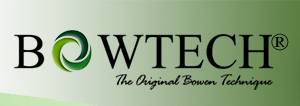8072 Mitch Owens Rd.
Ottawa (Edwards), ON K0A 1V0 [email protected]
Bowen Technique

What Bowen Is & Isn’t
1. Bowen is not Massage.
Those newly introduced to Bowen often associate it to massage. However, its operation and objectives are quite different. Rubbing or even prolonged touching around a Bowen "move" just applied can weaken the effectiveness of the move. Bowen moves go no deeper than fascia on superficially accessible muscles and only do so with gentle pressure.
2. Bowen is not Acupressure.
Some of the areas of focus in Bowen treatments coincide with acupuncture points, and broadly overlap meridian lines. With Bowen "points," though, a more focused intervention is complemented with a more economical application. In the Bowen Technique, one simple move across the structure is all it takes.
3. Bowen is not Chiropractic.
No manipulation of the skeletal system is made. Most practitioners and many clients observe vertebral movement, but this is evidence of the body realigning itself and a Bowen treatment working. Chiropractic adjustments following a Bowen treatment are counter-productive.
4. Bowen is not Directional "Energy Work."
Given its parameters, even energy work can be intrusive. Practitioners can focus too much on accomplishing their own desired results, which may or may not coincide with the client's needs. Instead, Bowen practitioners are taught to focus only on doing a precise movement accurately, and then physically leaving the room.
5. Bowen is not Physiotherapy or Neuromuscular "Re-Education."
Stretch reflex, Golgi reflex and reciprocal enervation may be involved in the muscular releases. These occur on a cellular level and expand out physically. People may fall asleep during a Bowen session and many will not feel the effects for several days. These factors distinguish the Bowen Technique from remedial exercises or movement training commonly done for long-term injury recovery.
6. Bowen is not Trigger-Point Therapy.
Some points are unavoidably similar even though the referral zones are different. Most trigger points are found in the core of muscles, while Bowen muscle moves are usually made where two muscles or muscle groups overlap or at muscle insertions.
7. Bowen is not Fascia Release.
With each Bowen move, the fascia, which is like an envelope that connects all internal organs and muscles, is rocked and minutely "disturbed"; it is not forcefully separated. After a series of Bowen sessions, adhesions tend to loosen and scar tissue frequently softens and shrinks on its own because impediments to the natural healing process are removed.
8. Bowen is not Lymphatic Massage.
Bowen does stimulate lymphatic releases, in that sinuses will often drain during the session; breast lumps may shrink or be gone within a few weeks; and excess fluids are usually eliminated within the week. Bowen does not, however, use the percussion or vigorous stroking of lymphatic massage.
9. Bowen is not an Emotional Release Modality.
The intent of a Bowen session is not to effect emotional releases. However, some people report the dramatic lightening of spirit and a subtle but pervasive refocusing of troublesome emotional patterns. Many body workers consciously focus on the interface between physical and emotional, trying to touch on that which is hidden behind a protective wall of hyper tense musculature. Excessive pressure is not needed. Bowen Therapy confirms that the best access is gained by the least threatening approach.